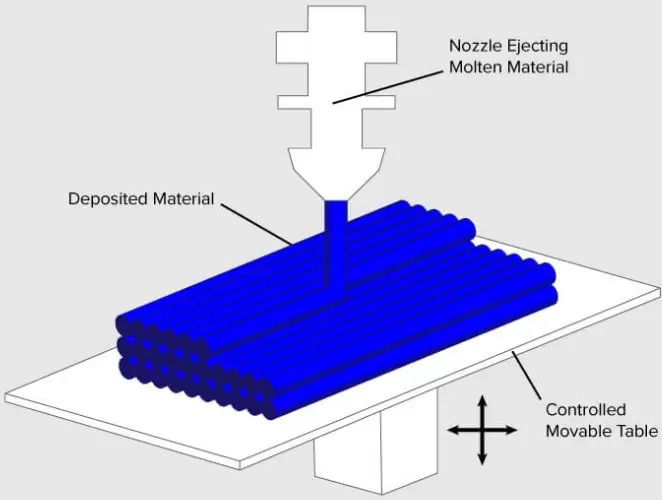This article explores the fused deposition modeling (FDM) process, a popular additive manufacturing technology. Learn about the technology behind FDM, its applications in various industries, and its advantages over other 3D printing processes.
Table of Contents:
I. Introduction
- Definition of the fused deposition modeling process
- Overview of the FDM process
II. Fused Deposition Modeling Technology
- How FDM works
- Components of FDM machines
III. Materials Used in Fused Deposition Modeling
- Types of materials used for FDM
- Properties of FDM materials
IV. Advantages of Fused Deposition Modeling
- Cost-effective production
- Speed of production
- Complexity and design flexibility
V. Applications of Fused Deposition Modeling
- Industries using FDM
- Examples of FDM applications
VI. Limitations of Fused Deposition Modeling
- Surface finish limitations
- Support material considerations
VII. Comparison of FDM to other 3D printing processes
- Comparison with other 3D printing technologies
- Advantages of FDM over other technologies
VIII. Conclusion
- Future of Fused Deposition Modeling
I. Introduction
Fused deposition modeling (FDM) is a popular additive manufacturing technology for creating 3D objects. It involves melting and extruding different materials to create a physical object following a 3D model. FDM offers several advantages to traditional manufacturing methods, including speed, cost-effectiveness, and design flexibility. In this article, we will explore the technology behind FDM, its applications, and its limitations.
II. Fused Deposition Modeling Technology
FDM involves melting and extruding materials, usually thermoplastic filaments, and laying them down in layers to form an object. The FDM machine uses computer-aided design (CAD) files to control the extrusion and build the object layer by layer. FDM machines comprise different parts, such as an extruder, a hotend system, a control board, etc.
III. Materials Used in Fused Deposition Modeling
FDM can use different materials, including thermoplastics, nylon, TPU, and more. The materials used must be able to melt, extrude, and solidify quickly to form the finished product. Each material has different strengths, flexibility, and temperature resistance. Choice of material will depend on the requirements of the final product.
IV. Advantages of Fused Deposition Modeling
FDM offers several advantages over traditional manufacturing methods, including cost-effective production, high speed production, and complexity and design flexibility. As FDM processes involve producing parts layer by layer, parts with complex geometries can be easily produced.
V. Applications of Fused Deposition Modeling
FDM is used across various industries, including aerospace, automotive, medical, and more. It is used for prototyping, product testing, and creating custom parts. For example, automotive companies use FDM to make car parts, and medical companies use FDM to make prosthetics.
VI. Limitations of Fused Deposition Modeling
FDM has limitations, such as surface finish limitations, where FDM parts lack smooth surfaces or very high accuracy. Also, FDM parts that require support structures can be time-consuming to create and may disrupt final product performance.
VII. Comparison of FDM to other 3D printing processes
Compared to other 3D printing technologies, FDM offers several advantages like affordability, ease of use, and material availability. FDM can easily produce complex geometries without much of an issue. Other 3D printing technologies like Selective Laser Sintering (SLS) are known for their detailed accuracy but are not as efficient in manufacturing.
VIII. Conclusion
Fused deposition modeling (FDM) technology is becoming an essential tool in various industries for its speed, cost-effectiveness, and design flexibility. Despite its limitations, FDM will continue to improve as new technologies are introduced. It is therefore important to understand the technology and the multiple benefits it offers to companies looking to optimize production processes.




